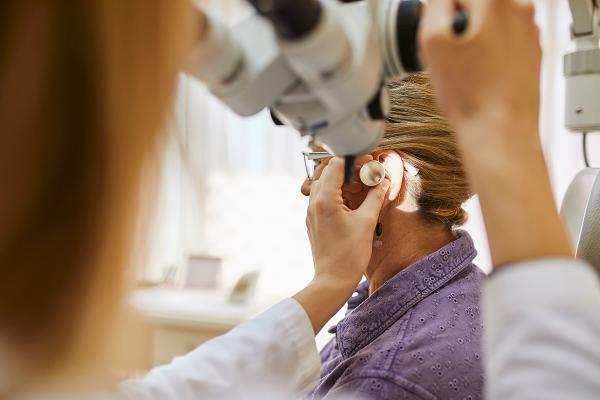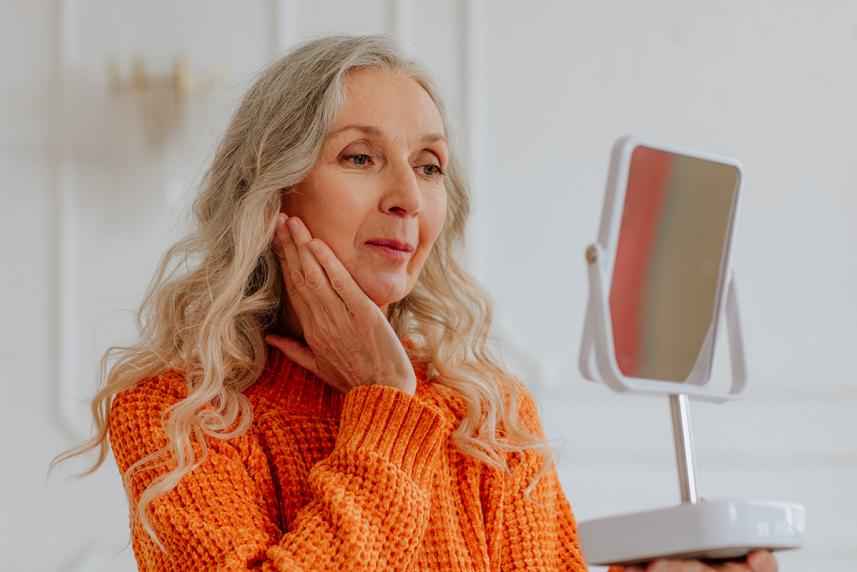
AARP Hearing Solutions helps members access hearing care professionals, no-cost hearing exams and more.
This popular alternative treatment doesn’t work, say experts – and it could be unsafe. Find out what it is and what to do instead.

Earwax is a good thing for your ears. Just enough wax keeps your ear canal moist. It also it traps dirt, protecting the ear canal and the eardrum from harmful bacteria.1
It’s true that too much wax in your ears may lead to an earwax blockage. This could cause pain, itching or a feeling of fullness.1 If you notice these symptoms, have your primary care provider (PCP) or a hearing care professional check your ears for wax. But most of the time, you don’t need to do anything to keep your ears clean.
Even so, some people are tempted to get rid of earwax with a popular alternative remedy called ear candling. You may have read about it online or seen ear candles for sale at drugstores.
But experts warn that ear candling doesn’t work. And it may be dangerous for your ears – and your hearing. Read on to learn what this home remedy is, and why you should steer clear.

AARP Hearing Solutions helps members access hearing care professionals, no-cost hearing exams and more.
This natural remedy claims to get rid of excess earwax using a long, hollow tube. This is called an ear candle.2 The tube is made from fabric that is dipped in wax.
To use it, a person lies on their side and inserts the lit candle in their ear canal, then lets the candle burn for 15 minutes or so. The theory is that the lit candle creates suction that draws out earwax and other impurities. (A paper, plastic or tinfoil cover keeps the hot wax from dripping onto the face.)
There is no scientific proof that ear candles are effective. That’s according to the U.S. Food and Drug Administration (FDA) and other major health organizations like the American Academy of Audiology.2,3
Ear candling isn’t that safe, either, says Traci Gamble. She’s a board-certified hearing instrument specialist at Beltone Hearing Care Centers in Lady Lake, Florida.
Burns are the common risk, says Gamble. “The hot wax can burn your face or catch your hair on fire,” she says. “Or it can drip into your canal and harm your ear canal or eardrum.” Another risk is that parts of the candle could get stuck in your ear canal.
Most of the time, your ears do a good job cleaning themselves out. Earwax travels from the ear canal to the outer ear and naturally falls out. But some people produce more wax than others. And as you get older, the wax itself changes and does not travel through the ear canal as easily. Wearing hearing aids may also lead to excess earwax and blockage.4,5
Why? The devices can prevent the earwax from moving out of your ear canal, says Gamble. And every time you put hearing aids in, you may push the wax further into the canal.
One sign that you may have too much earwax? You see wax build-up on your hearing aid filters. Other red flags include:1
Notice any of these symptoms? It’s a good idea to have an expert check your ears for wax.
There are several safe ways to remove it:
Have your PCP or hearing care professional do it. This is the safest option. These experts can remove earwax using a variety of methods. They may use a curved tool to dig it out. Or they may flush it out with hydrogen peroxide or saline mixed with water.6
Try a safer at-home remedy. Your PCP or hearing care professional may give you the OK to treat wax at home. They might prefer one or the other of these expert-approved treatments, or have you do both:7
If you wear hearing aids, try to use softening drops plus a bulb syringe once a month, recommends Gamble.
Whatever you do, don’t dig out earwax with a paper clip or cotton swab. And stay away from ear candling, no matter how natural it seems.
Did you know that if you belong to AARP®, you may be able to request a no-cost hearing exam and consultation through AARP® Hearing Solutions™ provided by UnitedHealthcare Hearing? Request an appointment.
Sources
Information is for educational purposes only and is not a substitute for the advice of a licensed medical provider. Consult your provider prior to making changes to your lifestyle or health care routine.
AARP Hearing Solutions is available to all AARP members and does not require a health insurance plan from UnitedHealthcare. The AARP hearing program discount cannot be combined with any other discounts, promotions, coupons or hearing aid benefit plans unless noted herein. Products or services that are reimbursable by federal programs including Medicare and Medicaid are not available on a discounted or complimentary basis. AARP commercial member benefits are provided by third parties, not by AARP or its affiliates. Providers pay a royalty fee to AARP for the use of its intellectual property. These fees are used for the general purposes of AARP. Some provider offers are subject to change and may have restrictions. Please contact the provider directly for details. UnitedHealthcare Hearing is provided through UnitedHealthcare, offered to existing members of certain products underwritten or provided by UnitedHealthcare Insurance Company or its affiliates to provide specific hearing aid discounts. This is not an insurance nor managed care product, and fees or charges for services in excess of those defined in program materials are the member's responsibility. UnitedHealthcare does not endorse nor guarantee hearing aid products/services available through the hearing program. This program may not be available in all states or for all group sizes. Components subject to change.